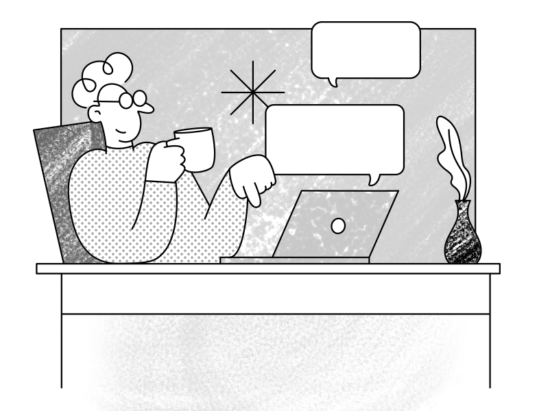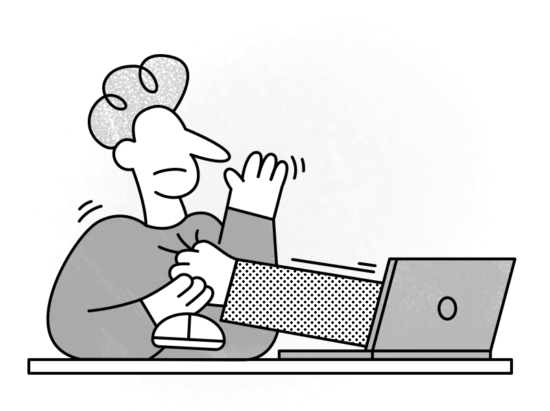Nowadays, building a site is a piece of cake.
Sure, there is more than one way you can create a website, but in the end, it all comes down to choosing the fastest and the most convenient method to do so. One of these approaches is using the WordPress platform to create a website which, as you know, we are a huge fan of.
So, let’s say you decided to build on your own business website and have already taken the necessary steps to choose the right WordPress theme. You have picked the right design, made sure the theme is not feature-filled and checked the theme’s responsiveness and SEO-friendliness. You are now confident that the theme of your choice meets all the standards.
Amazing!
Now, all that is left to do is for you to customize it, by making it look exactly how you want it.
But, before you can do so, you need to know that customizing a website is not all fun and games and can quickly turn into a fruitless endeavor. Why, you may ask? Well, because there’s more to it than changing the background color or playing with fonts and styles.
Just like the process of website creation, the site customization comes with rules and regulations you need to follow if you want to stay out of trouble and on the right side of the law.
By now, you probably know what we are talking about. Staying on the right side of the law means that your website meets all the website legal requirements.
So, to make sure you are not a part of the lawless, wild, wild west side of the Internet, we have prepared for you a list of website legal requirements you need to follow if you want to avoid a lawsuit. It’s as simple as that.
Disclaimer: Before we go on with the text, there are two things we need to mention. The first thing is the fact that although we enjoy watching Law and Order and Suits, we are not, by any means, legal experts. Being a team of web developers and designers, we know a thing or two about the legal aspects of making a website, but that’s it. So, if you have any doubt regarding online legal issues, be sure to reach to a lawyer. The second thing we need to disclose is that the website legal requirements vary depending on the country. So, for example, copyright law in the US is not the same as the one in the UK. Be sure to keep this in mind.
Website suitability
This one is simple.
According to the World Wide Web Consortium (W3C), your website should be accessible to as many people as possible. To make sure you are meeting this standard, be sure to read W3C’s guide for site accessibility.
Plagiarism is a big no-no
No matter if we are talking about a copy on your About Me page, the product description on your e-commerce website or a blog post you’ve just published, it goes without saying that all content (text, photos, videos, etc.) on your site MUST be original.
When you read this sentence, you are probably thought to yourself What about all the same photos I’ve been coming across on multiple websites?
You are right. There’s a catch.
Technically, you can put up a content on your website that is not originally yours, but you have to get a license. It’s called content licensing, and it simply means you need to get permission from the author if you want to feature content on your site.
Now, getting a license is pretty easy, but there are some limitations to using this type of content.
The first thing you have to remember is that if the content is not originally yours, you are going to be the second one (at best!) that published it. Additionally, you need to know that you are probably not the only one who wants to get the rights to publish the content in question. So, before you get in the process of obtaining a license, ask yourself if it’s a good idea to feature content that has already been published on other sites.
The second thing you have to remember is that you may not be able to use and distribute the content any way you like. That is why we would advise you to read “the fine print” to make sure you are clear on all the terms and conditions.
And this is how you make following website legal requirements easy!
Stock markets
Not the ones you sell stocks on, but the ones you sell stock photos on.
Stock photos are images that are widely available on several online markets and all you need to do is license them by paying a fee to the artists that produced them. That way the author retains copyright of his/her work and you get to use the photo the way you like.
But, what if we told you that you don’t have to pay for the license? There is always a loophole in legal rules, especially when it comes to website legal requirements.
There are several stock photos markets out there (like Unsplash, Pexels, Pixabay) that don’t require you to give credit to the photographer or pay a fee for a license. This additionally means that you can download, distribute and use the photos for commercial purposes without naming the author on your website.
Resharing blog posts
We are sure you are familiar with the fact that the more blog posts you published, the merrier.
It’s true. Consistency is one of the most important factors when it comes to blogging.
But, if you don’t have the time to publish content five or six times a week, you might opt for resharing someone else’s content.
That’s a cool idea, as long as you stick to the rules.
There is nothing wrong with resharing someone’s content as long as you get permission from the source. In fact, it’s one of the best practice in the website legal requirements department. Once you have the permit, you can publish it with the disclaimer what the source is.
The copyright law
The copyright law is the source of all website legal requirements (at least in the US).
This law grants authors the exclusive right to make and sell copies of their works. Additionally, this law limits any website owner to copyright the content and suggests steps an owner should take he/she decides to violate the requirements.
However, this law is not the only one that should stop you from doing shady things online. There are two acts that will keep you on the right side of the law 一 Digital Millennium Copyright Act (which is more of a guide for copyrighting) and Communications Decency Act. Before you decide to become a website owner, be sure to familiarize yourself with these two acts.
Privacy policy
The privacy policy is just one part of the website legal requirements you need to keep in mind when creating a website. This policy should:
- explain how your website collects users’ data throughout the site and how a visitor can opt-out of his/her information being collected and used,
- provide links where users can see the data that has been collected,
- state all the security measures your website has to protect users’ data,
- provide options for users if the privacy policy hasn’t been adhered to.
Before you get to writing your site’s privacy policy, remember that this section should not be on your website because “the law said so”, but because it builds trust among your customers and website visitors.
Disclaimer: If you have an e-commerce website, keep in mind that you should pay more attention to the privacy policy. Make sure all the prices are readable and stated adequately (including the taxes part). The same thing goes for the return policy and refund.
Cookies policy
Cookies policy is a significant part of privacy policy and is a legal document that you should place on a website to notify visitors about the types of tracking technologies used by your site. Besides that, this document should also inform users about how their personal information data is used.
Are you obligated to have cookies policy? Well, the answer to this question depends on the continent you are in. If you are operating in the European market, one of the website legal requirements is to have a separate cookies policy. That means you need to have privacy and cookies policy. If you are based in the US, it is advisable to add cookies policy to your website but you are not legally required to.
What about the hack attacks?
Cybercriminals are all around us. It’s time to face the fact that your site, no matter what platform you chose to build it on, is vulnerable to hack attacks. Nowadays, hackers can, in just a few steps, access your website data and content and breach billions of records.
Stop for a second and think about these attacks.
If you have an e-commerce website that has the data of every buyer that has ever purchased your product, you are definitely in big trouble.
To avoid the risk of getting hacked and to make sure you play by the website legal requirements playbook, be sure to read an article on WPBeginner.com. This article will help you understand the reasons WordPress sites get hacked and how to prevent this from happening.
Security policy
While we are on the subject of hacker attacks, it is good to mention that you should invest in your site protection.
For starters, create a security policy, which will serve as a plan if you ever encounter a security breach.
Additional tip: Keep your WordPress site secure by choosing one of the security plugins.
Terms and conditions
Not only do you want to make sure you don’t take other people’s content and claim it as yours (that’s just rude!), but you also want to ensure no one can claim your content as his/hers. Not to mention, we are sure you want to protect yourself from getting sued by a consumer for some odd reason. That’s what the page Terms and Conditions is for.
Adding this page to your website will make sure you are protected from all the false claims. Save your precious time and avoid dragging in the court.
Writing Terms and conditions page
As we previously mentioned in a disclaimer at the beginning of this post, terms and conditions vary from a country to country. That is why writing this page is not that simple. If you want to play by the rules, our advice is to consult with a lawyer.
The little C in a circle
This is probably one of easiest website legal requirements you can implement. This time, you are protecting your website content.
The little C in a circle is a copyright symbol which is used on so many things nowadays 一 books, different types of product packaging, websites etc. Although it is so small and almost unnoticeable, it plays a huge role in the copyright world.
So, what does the circled C stand for? Well, according to the U.S. Copyright Office, this symbol represents a copyright notice for the public. Since it has been published (in March 1989), this symbol is required for all works first published.
How can you make sure you protected your website correctly? Well, you need to:
- add the symbol “©” with the word “Copyright”,
- mark the year of first publication,
- mention the name of the copyright owner (your website/company).
We like to think of this symbol as Captain America’s vibranium shield 一 a petite armor that provides unbelievable power.
WordPress rights
No matter which platform for building a website you chose to go with (WordPress, Joomla, Drupal, etc.), you need to know there are rights for using it.
In the case of WordPress, there is General Public License. This license mentions that you can freely use the programme, as long as you meet all the terms of the previously mentioned license.
Consistent information
Website copy is not just there to pull the user in and make your business/product seem attractive. Website copy’s first purpose is to inform.
That is why all the information regarding your blog or e-commerce website needs to be consistent. Name, address, phone number,… everything! Every information that is repetitive has to be consistent throughout the pages.
Why should you stick to these website legal requirements?
In the end, there is only one question left: why should you follow the previously mentioned website legal requirements? The answer is simple: to save time and money.
Not including all the previously mentioned pages and tips can lead to facing a large amount of payment and ending up in court.
We are sure you are not about that life.
So, now that you know what you should include on your website, answer to the following question honestly. Is your site meeting all the website legal requirements?



